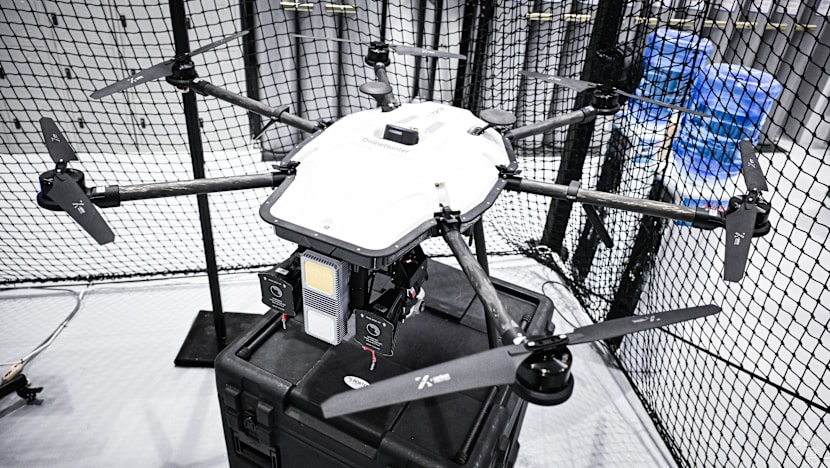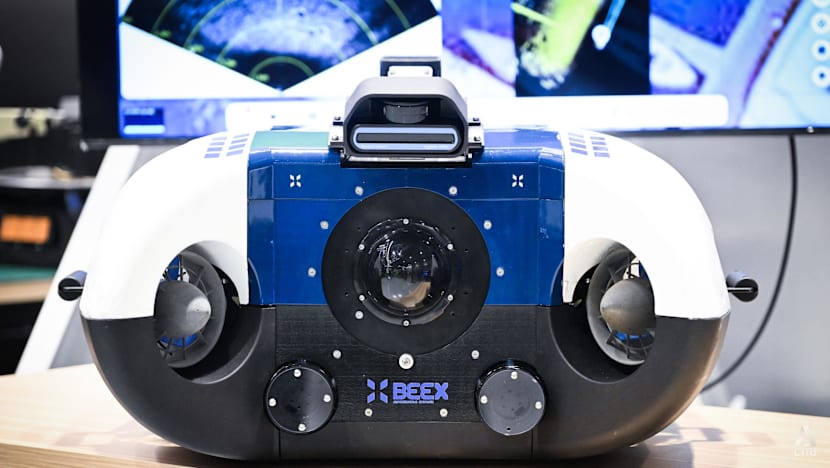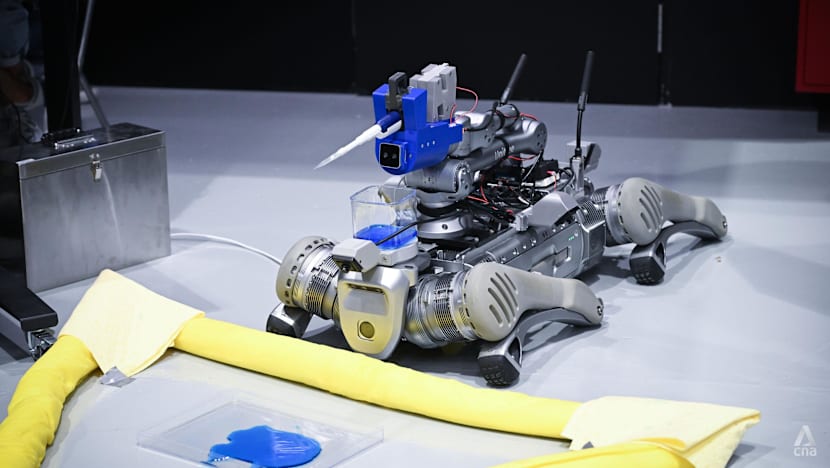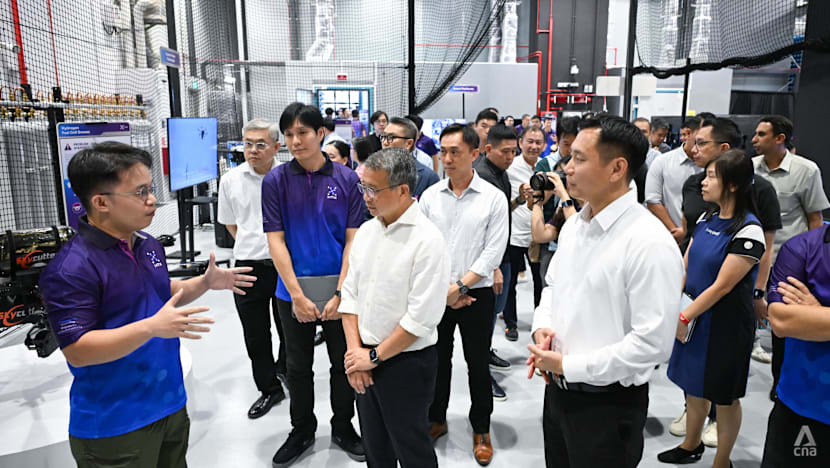First of its kind drone interceptor among new tech unveiled by Singapore’s Home Team
Over 20 new innovations were on show by the Home Team Science and Technology Agency’s (HTX) at its new purpose-built developmental testing and evaluation facility for public safety.

A drone interceptor, the first of its kind to operate independently of GPS and Global Navigation Satellite System (GNSS). (Photo: CNA/Syamil Sapari)

This audio is generated by an AI tool.
SINGAPORE: Home Team agencies may soon have in their arsenal a high-speed drone that can intercept rogue drones, pursuing and capturing them with a net.
The drone interceptor, created by the Robotics, Automation and Unmanned Systems Centre of Expertise (RAUS CoE), is the first of its kind in the world to operate without the global positioning system (GPS).
Current counter-drone systems work by blocking a drone’s radio frequency communication links and GPS signals.
“However, jammed drones may still hover in place or crash unpredictably, posing risks if they are carrying dangerous payloads,” the Home Team Science and Technology Agency (HTX) said.
“This challenge is even greater in dense urban environments like Singapore, where traditional counter-drone techniques become harder to execute safely in crowded places, between tall buildings that might result in serious consequences should the drone crash.”
The new device was among over 20 innovations on show at HTX’s annual TechXplore, which showcases some of its most cutting-edge technologies.
This year’s edition was held in Garage@HTX in Jurong, Singapore’s first purpose-built developmental testing and evaluation facility for public safety.
The facility, launched by Minister for Law and Second Minister for Home Affairs Edwin Tong on Monday (Oct 13), lets HTX test and evaluate the safety and functionality of assets like drones, vehicles and communications systems, before deploying them.
ENHANCING OPERATIONAL CAPABILITIES
Also unveiled on Monday was a remotely operated underwater search robot guided by artificial intelligence (AI).

Such remotely operated options that are currently commercially available require operators to manually scrutinise sonar and camera feeds in real time to spot underwater targets.
“This process is demanding and prone to human error,” said HTX.
Home Team divers often operate in challenging and dangerous underwater environments, with poor visibility and potential exposure to hazardous conditions.
The new device detects potential underwater targets, moves in to perform a high-resolution scan to verify them, before relaying their position so that divers can be directed precisely to the spot.
It leverages AI to make underwater searches smarter, safer and autonomous, reducing the need for divers to enter the water.
Another project will automate the transport of food and goods within Singapore’s prison compounds, making it more efficient and augmenting existing manpower.
The Autonomous Remote Movers (ARM) project is set to be trialled at Cluster A within Changi Prison Complex in September next year.
Developed by the Vehicle and Weapon Systems Centre of Expertise and RAUS CoE, the project integrates a system of autonomous vehicles and mobile robots.
A truck will be equipped with self-driving capabilities to transport food trolleys on the road, while a rear compartment will be designed for the mobile robots to collect and deliver them within buildings.

Home Team officers will also be able to remotely carry out tasks in dangerous environments, with a haptic-enabled mobile manipulator developed in-house by RAUS CoE.
An integrated robotic hand mounted on a robotic dog, lets officers remotely handle objects in a precise manner.
A virtual reality controller tracks officers’ individual finger movements, with the robotic hand directly reflecting their actions and providing them direct control.
It can be used for various tasks, such as collecting liquid samples in pipettes to atmospheric monitoring with gas detection equipment.
A NEW FACILITY FOR NEW CHALLENGES
The new Garage@HTX plays an important role in ensuring that "Singaporeans get to enjoy the best in terms of security options that can be deployed in Singapore", said Mr Tong.
“We've got to ensure that we are broad in the spectrum of options that we have. We can't always tell where the threats will come from, but for us, the ethos at Home Team is to always be prepared to be thinking ahead and to be looking ahead, and to always be prepared to trial new equipment to deal with newer and high technology-dependent threats as well,” he said.

In the facility is a cavernous chamber that allows for electromagnetic interference (EMI) testing.
Home Team vehicles, like ambulances, contain hardware that emits EMI signatures and may interfere with sensitive electronics, such as life-saving equipment.
The purpose-built chamber is large enough to accommodate large Home Team vehicles like the Singapore Civil Defence Force’s Electric Pump Ladder.
Another space, called the Arena, lets engineers safely test and evaluate unmanned aerial systems and robotic systems, such as humanoids.
Surrounded by nets, such an environment is important as drones may veer off intended flight paths and collide with other objects during testing.
The Arena is also equipped with features that provide near-real-world conditions, such as wind simulation.














